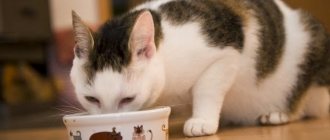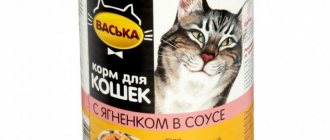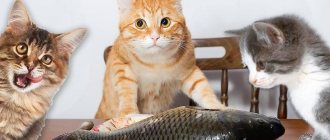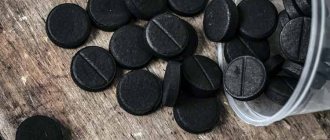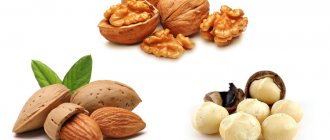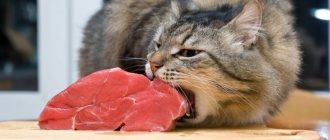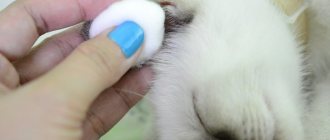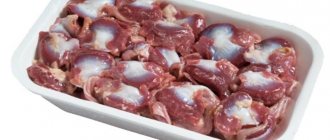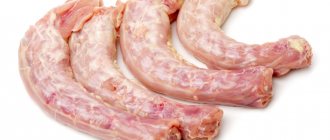Cats have long been pets that need care and attention from their owners. This also applies to diet. The pet owner is responsible for what the cat will eat today, tomorrow, and the day after tomorrow. Her health and a proper, balanced diet depend on the person. Many people prefer ready-made food, in which professionals have taken into account all the needs of the cat’s body at different periods of its life. Premium cat food always contains beet pulp. What about animals that eat natural food? Maybe beets are not at all necessary in a cat’s diet and can be replaced with other products?
Features of feeding cats
Cat owners who refuse industrial food for their pet in favor of “natural” food often make the same mistake. They believe that meat and fish are enough for normal nutrition. At the same time, the main argument they give is that in nature cats practically do not consume plant foods.
But the absence of vegetables in the diet of wild carnivores does not mean that it is not sufficiently balanced. Cats devour any prey they catch whole. And it is from there that they take the necessary substances for their body, for example:
- calcium is obtained from scales, wool or bones;
- the supplier of carbohydrates is the contents of the stomachs of rodents and birds;
- proteins and fats are obtained by eating muscle tissue;
- The source of vitamins is plants.
Under natural conditions, an animal will always find where to get the element missing for its body. Domestic cats are deprived of this, and their health depends only on the owner. Therefore, it is important to ensure that your furry pet receives a sufficient amount of vitamins. Vegetables or sprouted grass are the source of nutrients. One of the essential vegetables for cats is beets.
Diet planning
One adult animal weighing about 4 kg needs about 200 grams of natural food per day. For castrated males or female cats, this rate should be reduced, since due to changes in the functioning of hormones, metabolic processes slow down. As a result, the animal may become obese.
The general percentage composition of the correct diet for a cat is as follows:
- 70% protein foods (raw or boiled beef, poultry, rabbit).
- 20% raw or boiled vegetables.
- 10% boiled porridge.
The basis of the food is meat . This is an indispensable product that allows the animal to be healthy, gain energy and have beautiful skin and coat.
Meat contains those amino acids that are extremely necessary for the animal and are not found anywhere else, namely:
- Biotin (essential for healthy skin and coat).
- Taurine (found only in fish and beef, responsible for the health of blood vessels, nervous and reproductive systems).
- Arginine (responsible for metabolic processes in the body and the production of hormones).
It is important to remember that cooking meat destroys these amino acids.
Also, fats and proteins enter the cat’s body with animal products. They participate in the structure of body cells and are the main supplier of energy for an active cat.
Fish is also a good supplier of protein and rare amino acids, but it is not recommended to give it more than once every few weeks, and it is completely prohibited for castrated cats. This is due to the fact that this product contributes to the appearance of urolithiasis in cats.
In addition to these products, fermented milk products (kefir, fermented baked milk, cottage cheese) and eggs (only boiled or raw yolk) can be added to the cat’s diet.
In addition to meat, a healthy animal needs vegetables. It is an indispensable supplier of fiber and vitamins. Vegetables normalize the functioning of the gastrointestinal tract, and can be either raw or boiled. You can add to your daily diet: carrots, cabbage, sweet potatoes, spinach.
In last place are cereal crops. This could be boiled rice, oatmeal, or corn kernels. They are added to food in the form of a ground paste.
This is interesting: How much should you feed a kitten?
Composition and beneficial properties of the vegetable
The red root vegetable contains an unusually rich range of useful substances. It includes:
- Organic acids (acetic, oxalic, tartaric, malic).
- Vitamins (almost the entire group B, C, P, PP, carotene).
- Minerals (cobalt, phosphorus, magnesium, copper, calcium and especially potassium).
- Amino acids (lysine, arginine, histidine, valine).
- Glucose, sucrose and fructose.
In addition, beets contain pantothenic and oleanolic acids, iodine and little-known methylmethionine sulfonium chloride, or vitamin U. The vegetable is also a supplier of fiber, proteins and carbohydrates.
Thanks to its beneficial composition, beets can improve many physiological processes in the cat’s body.
Effect on the body. When introduced into the diet, the root vegetable helps:
- normalization of hormonal levels;
- hemoglobin production and blood thinning;
- formation of a strong skeleton;
- increasing immunity;
- strengthening the walls of blood vessels;
- lowering cholesterol;
- normalization of gastric juice acidity.
In addition, beets help reduce the risk of tumors and allergic reactions, take part in lipid metabolism, maintain energy balance and prevent the development of anemia.
Mr. Cat Recommends: Effective Home Remedies
In case of constipation, there is no need to immediately stuff your animal with medications. Sometimes they are necessary, but most often you can get by with effective and safe folk remedies.
Here are some good recipes:
- Condensed milk. Condensed milk is mixed with clean water in a ratio of 1:3, and given to the cat in small quantities (no more than a tablespoon) several times a day. The time interval between laxative doses should be at least three hours, and in total the laxative should be given no more than five times a day. Diabetes mellitus is a contraindication to the use of this method.
- Vegetable oils (coke, linseed, olive). A few drops of oil should be added to the animal's food. You can’t overdo it; you should give no more than a quarter of a teaspoon. This method can only be used in extreme cases, when no other laxatives are available. Vegetable oils have a negative effect on the cat’s liver and can cause discomfort and negative reactions from the intestines. Veterinarians do not recommend using oils as a laxative. Only adult animals can be treated in this way.
- Vaseline oil, castor oil. These agents help move stool through the intestines. Vaseline or castor oil should be given to your cat using a special syringe. It is best to discuss dosages with your veterinarian. The optimal dose is calculated based on the weight of the animal (about 1.5 ml per kilogram of weight). After taking such a laxative, it is necessary to limit the cat's food intake. It is advisable not to give anything before bowel movement. Usually, defecation occurs after 3-5 hours. If there is no effect during this time, you need to repeat taking the product.
- Milk. For cats, the whole product has a laxative effect. Warm milk is given in small quantities, several times a day. You cannot overdo it with this remedy, as an overdose can cause severe diarrhea.
- Freshly squeezed vegetable juices and raw vegetables. As a laxative, you can give your pet a few pieces of beets, pumpkin or carrots, as well as juice from these vegetables.
If there are plants in the house, or the cat walks outside, then, following instinct, it can pick up a laxative for itself. Plants with a laxative effect:
- cat mint;
- Melissa;
- rhubarb leaves;
- aloe;
- pharmaceutical camomile;
- buckthorn;
- cucumber leaves;
- centaury.
You can prepare a decoction from these plants and give your cat water several times a day. It is better to make it one-component, taking a tablespoon of any herb per glass of boiling water. After standing, cooling and straining the product, it should be given to the animal 1-2 teaspoons every 3-4 hours.
In addition to oral remedies, there are other methods to combat constipation. The most effective and fastest way to alleviate a cat’s condition is a cleansing enema.
It is advisable that the procedure be performed by a veterinarian or nurse.
If the owner has some experience, he can give his pet an enema himself. To carry out the procedure, take warm water or chamomile decoction. It is necessary to monitor the temperature of the liquid so as not to cause pain or discomfort to the cat.
Another way to stimulate intestinal peristalsis so that it is freed from feces is abdominal massage. Only the owner can do it, since cats really do not like touching the most vulnerable part of the body from their point of view. You should calm the cat down, and then slowly stroke it, without pressing too hard, in a clockwise circular motion. The massage procedure is carried out after taking a laxative.
How to properly feed cats beets
In order for your pet to get the maximum benefit from eating beets, it is important to follow the rules for preparing them:
- To feed cats, you need to choose fresh root vegetables. They should not be lethargic, have no traces of mold or foreign odors.
- Before cooking, be sure to rinse the vegetable in warm water.
- You need to cook the beets over high heat for no more than half an hour. If you increase the cooking time, there will be nothing useful left in it.
- It is strictly forbidden to add salt and spices to the cooking water.
- To prevent the accumulation of nitrates in the beets, be sure to drain the water after cooking.
- Store beets for cat food only in the refrigerator, no more than a day.
Submission rules and regulations. Before giving the root vegetable to your pet, it should be cut into small pieces. It is recommended to give beets raw in the form of puree or juice. For feeding cats, preference should be given only to table beet varieties.
The approximate norm in combination with other vegetables is 30-40 g, but no more than 10% of the daily diet and no more than 2 times a week.
Kittens begin to be introduced to beetroot complementary foods from 3 months of age. Along with the root vegetable, you can use finely chopped beet tops. You can only combine beets with other vegetables or meat. It is forbidden to give fermented milk products at the same time as this vegetable.
Nutrition rules
Cats are popular and widespread pets that are loved by many people. As a rule, these pets are unpretentious and undemanding in matters of nutrition, but this does not mean that they can consume everything as food. Cats need to be fed correctly, following a certain regimen. Let's look at a few basic rules for feeding these cute animals.
- Try not to make a mess in your pet's bowl. Some people try to make real porridge for their cat using individual ingredients. This is a useless exercise - the cat will still choose from the general mass exactly what it needs most. All other ingredients, even if they are tiny, will remain in the cup and may soon spoil.
- Consider the fact that cats are very picky about the temperature of their food. In this situation, instincts come first. In their natural habitat, wild cats begin to consume food immediately after a successfully completed hunt, while the meat has not yet cooled. In addition, through certain experiments it was proven that cold food is much worse absorbed by the cat's body.
- Experimentation is permissible in feeding cats. Organoleptic properties are very important for these pets. But we must take into account that in this matter each individual has its own specific preferences. For example, one cat will like the new food purchased by the owner, while another will be more conservative and prefer the usual diet to new additions.
- Cat food should contain proteins and vitamins. With such nutrition, the animal will be healthy and energetic, the fur will be in perfect condition.
- There is no need to feed cats only meat or only fish. Many owners, unfortunately, believe that only such products can be given to animals. This opinion is wrong. The food must be quite varied. Thus, wild individuals eat the meat of birds and small rodents, eating the prey along with all the contents in its stomach - herbs and seeds.
- You must first decide what kind of food you are going to give your cat. It is allowed to give either only dry or only natural food. This important rule should not be neglected, otherwise chronic diseases of the gastrointestinal tract can be provoked. It is important to consider that dry food and natural foods cannot be digested at the same time. That is why it is necessary to make a choice in advance in favor of a certain type of animal nutrition.
- If you decide to feed your pet dry food, then you should purchase only high-quality premium or super-premium products. In addition to the highest quality and richness, such feeds are characterized by the presence of preventive diets. With such nutrition, the animal will always be healthy and active.
- The cat's nutrition must be selected in accordance with its physiological state. During pregnancy and lactation, the diet should be as balanced as possible in calcium and protein. It is very important to pay due attention to taurine content. Spayed and neutered animals should eat a diet that consumes fewer calories to prevent the pet from gaining weight or becoming obese.
- Adult cats should be fed in the same place in the house. The animal must have its own separate bowl with compartments for food and water. Food and ready-made canned food should not be given cold.
- You should also pay attention to the degree of freshness of the products. They must be of high quality.
All of the above rules are very important. They must be followed if you care about your cat's health.
When to use beets with caution
In addition to its beneficial effects, beets can also have harmful effects on your pet’s body. The urine of a healthy cat is acidic, and with constant consumption of red vegetables, its acidity is significantly reduced. This can lead to various problems, including:
- the formation of salt crystals (uroliths) in the urinary tract;
- irritation, swelling or capillary bleeding of the urethra;
- obstruction (blockage) of the urinary canal.
If there is complete obstruction, the animal may die within 3 days.
Other adverse effects. Frequent feeding of beets increases blood sugar levels. These fast carbohydrates can cause diabetes. In addition, the root vegetable contains iron. If the vegetable is consumed excessively, it can accumulate in the body and cause problems with the pancreas. It is also known that beets have a laxative effect, which can lead to digestive problems in the animal.
When is a laxative necessary?
Having identified symptoms of constipation in a cat, you should not immediately give it laxatives, be it traditional or medicinal. Sometimes this is absolutely not worth doing.
Sometimes the absence of bowel movements is explained by psychological problems or stress. In such cases, laxatives are not needed. The animal must be calmed and a comfortable environment created.
In difficult cases, your pet should be examined by a veterinarian and undergo a course of treatment with antidepressants.
The cat may not accept the tray, the place where it is, or may not tolerate the filler for some reason. In such cases, the reason for the lack of defecation is also in a stressful state, and the animal needs help: change the type of litter, rearrange the tray, sometimes even buy another toilet.
If the cause of constipation is nutritional problems (prolonged fasting, switching to another food, inappropriate food), then the pet needs a diet.
You should consult your veterinarian on what to feed your cat. In such cases, folk remedies can be used for relief.
Medicines should not be given without a doctor’s prescription, especially if they are intended for humans. In some cases, you can use medications, for example, if the animal has undergone castration or sterilization surgery, the veterinarian will tell you about the appropriate ones.
If the cat does not go to the toilet for more than three days and experiences noticeable discomfort, it can also be helped with medication.
In other cases, if blood or mucous inclusions are found in the pet’s stool, then no medications should be given. There is also no need to give a laxative if constipation is caused by intestinal obstruction due to a foreign body.
In such cases, you can do an enema; this method will help to quickly cleanse the rectum and slightly alleviate the cat’s condition. However, you need to show the animal to a doctor as soon as possible.
Also read the article about what to do if a cat cannot go to the toilet in a big way.
If it gets bad
To prevent beets from harming your pet, you must carefully monitor the feeding rate. An adult dog needs 20 grams of raw or boiled beets 1-2 times a week. Introduce complementary foods carefully, observing the reaction.
If the animal becomes ill after eating beets, then it is necessary to seek help from a veterinarian. The reasons may be:
- individual intolerance;
- allergy;
- violation of complementary feeding norms;
- pancreatitis and others.
Symptoms of poisoning:
- vomit;
- diarrhea;
- thirst;
- lethargic state;
- refusal to eat;
- in rare cases, spasms.
The first aid that must be provided to the animal is gastric lavage and an enema. After this, give any absorbent, for example, activated carbon.
Human food: can it be given?
It would seem that it could be easier than feeding a domestic cat with dishes from your table. But, before you treat your little friend to a fragrant cutlet fried in a frying pan, borscht, a delicious salad or ordinary porridge with spices, think about what awaits your cat in a few years, or even months.
The fact is that such food is absolutely not suitable for feeding a pet. Most dishes are prepared according to traditional recipes: fry, cook fatty broths, be sure to add salt and other spices to enhance the taste. All this together is real poison for a cat! She, of course, will be happy to enjoy a well-fried fish or a delicious sweet dessert, but we will now tell you what consequences to expect from such a diet!
Why you shouldn't eat certain foods:
- canned, spicy, fried and salty foods greatly irritate the gastric mucosa, which soon leads to indigestion and other gastrointestinal pathologies;
- smoked meats, sausages, sausages, boiled pork and other gastronomic meat products contain too high a percentage of salt and spices, which complicates the functioning of the kidneys and heart, and also leads to the development of cardiovascular diseases;
- There are no enzymes in the cat's body that break down sugar, so they should never be given sweets in any form, which can cause obesity and dental health problems;
- bones, especially small fish and chicken bones, can injure the throat and mucous membranes of the digestive organs, cause internal bleeding and other adverse complications that are dangerous to the life and health of the cat;
- raw fish and raw meat in an unprocessed form - high risks of parasitic infection;
- fatty dairy products worsen the functioning of the intestines and other digestive organs, contributing to the development of obesity.
Despite the list of contraindications, the diet of domestic cats should be varied and fortified. Due to a lack of vitamins and other useful elements in the animal’s body, very unfavorable diseases can also occur that shorten the life span.
So, if you are wondering what to feed your cat at home, do not consider food from your table as an option. Only separately prepared meals or ready-made industrial food, which greatly simplifies the feeding regimen of the animal.
Raw or cooked
The opinions of felinologists and veterinarians differ, but there are no strict prohibitions regarding either fresh or boiled vegetables. Cats are reluctant to eat them, so owners often follow the pet’s taste and give them in the form that he likes. Be sure to cook food for animals with diseases of the gastrointestinal tract.
The need for treatment for healthy cats depends on the stiffness of the fibers:
- beets , cabbage , pumpkin are boiled to soften coarse fiber and reduce the concentration of nitrates;
- tomatoes , potatoes , eggplants are processed to remove solanine;
- greens and cucumbers are given raw;
- zucchini , green beans , and carrots are fed fresh and boiled.
Plant food is a secondary but necessary component of a cat’s diet. They are taught to eat them from childhood, they are given vegetables that the pet eats, except toxic ones, and they are prepared correctly.
Different breeds
Due to its composition, beets are suitable for almost all breeds of dogs. Only Dalmatians cannot tolerate it. The only trouble that a vegetable can cause is a change in color in those with white fur. With excessive consumption of beets, the coat turns yellow or takes on a sandy tint in the following breeds:
- chihuahua;
- poodle;
- Maltese;
- Bichon Frize;
- Clumber Spaniel;
- silky windhound;
- white Spitz (Pomeranian or Japanese);
- Samoyed dog;
- West Highland White Terrier.
Are there any contraindications?
Fodder or sugar beets can be fed to chickens in strictly limited quantities. The daily requirement for crushed feed is only 30-50 grams per head. Exceeding the dosage can lead to diarrhea or depression in chickens. In this case, laying hens are stopped feeding these products. True, it will not be possible to do without such valuable and cheap food.
It's better to take a short break and watch the birds. Perhaps the diarrhea was caused by some other food. After all, all large poultry farms feed chickens fodder or sugar beets in huge quantities.
After some time, you can resume feeding the birds with this food. True, instead of fresh, it is better to give chickens boiled root vegetables. The taste of vegetables will only improve after heat treatment. Boiled root vegetables have a lesser laxative effect; this product does not irritate the intestinal receptors, therefore, in case of intolerance, fresh vegetables can be replaced with boiled ones at any time.
